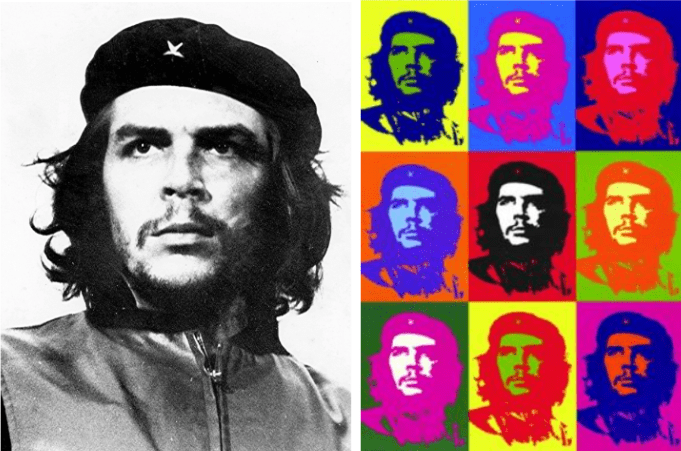Written By: Ava Osorio
The image of his likeness has been pushed throughout pop culture for generations, but how did the face of Che Guevara really get everywhere in society?
Ernesto Guevara or better known as “Che” Guevara is a well-known Latin American historical figure. He was born in Argentina and was a Marxist revolutionary.
Guevara was the eldest of five children and grew up in a middle-class family that supported leftist ideals. These learnings inspired his actions later on in his life. Che Guevara’s goal was to create an ideal socialist citizen who would work for the good of all and not just for their own personal benefit. When he traveled through South America, he became motivated to make a change and stop poverty throughout South America.
Upon coming to Cuba, and meeting the Castros he decided to join forces. For this reason, he played a major role in the Cuban Revolution as a guerilla leader. Che Guevara was best known for the series of battles in which he took over the capital city of Santa Clara. This battle would become the final major victory of the revolution. Che Guevara became the president of the national bank and the director of industrialization of the Cuban armed forces. He also traveled the world as a global diplomat on behalf of Cuban Socialism. Although all this would come to an end when the guerrilla group that Che led in Bolivia was shot down by the Bolivarian army that was aided by the CIA.
The big question is, why do so many people wear his face on t-shirts, have it on posters, and other merchandise? The well-known vector of his face comes from Jim Fitzpatrick. Jim Fitzpatrick met Che Guevara when he was only 16 – five years later he would create an iconic two-tone portrait of him based on a photo by Alberto Korda.
His face began to take a major role in pop culture. This was because after Guevara was executed by the Bolivian army, he was remembered as a martyr to those with similar ideals to his. People saw him as the underdog who was able to overcome suppressors. What helped his popularity was that he was a revolutionary figure who was young, that other young people could relate to. In pop culture, they used his face as a symbol of rebellion.
It is important to note that the use of his face has been dying out as more public awareness has come of his war crimes, racism, and homophobia in South America.

